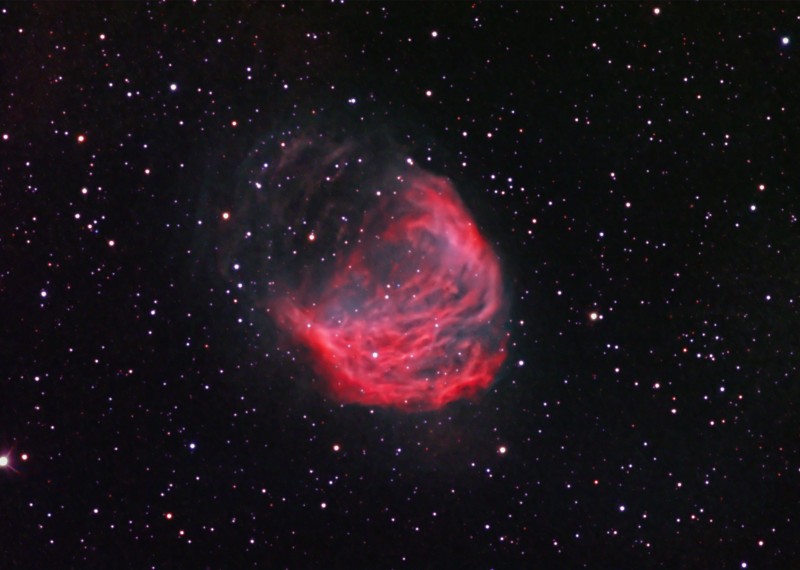
|
Credit & Copyright: Don Goldman
Explanation:
Braided, serpentine filaments of glowing gas
suggest this nebula's popular name, The Medusa Nebula.
Also known as Abell 21, this Medusa is an old
planetary nebula
some 1,500 light-years away in the constellation
Gemini.
Like its mythological
namesake, the nebula is associated
with a dramatic transformation.
The planetary
nebula phase represents a final stage in
the
evolution of low mass stars
like the sun,
as they transform themselves from red giants to hot white dwarf
stars and in the process shrug off their outer layers.
Ultraviolet radiation
from the hot star powers the nebular glow.
The Medusa's transforming hot central star is visible in the
detailed
color image as the small blue star within the upper
half of the overall bright
crescent
shape.
Fainter filaments clearly extend above and to
the left of the bright crescent region.
The Medusa Nebula is estimated to be over 4 light-years across.
|
January February March April May June July August September October November December |
| ||||||||||||||||||||||||||||||||||||||||||||||||
NASA Web Site Statements, Warnings, and Disclaimers
NASA Official: Jay Norris. Specific rights apply.
A service of: LHEA at NASA / GSFC
& Michigan Tech. U.
Based on Astronomy Picture
Of the Day
Publications with keywords: planetary nebula
Publications with words: planetary nebula
See also:
